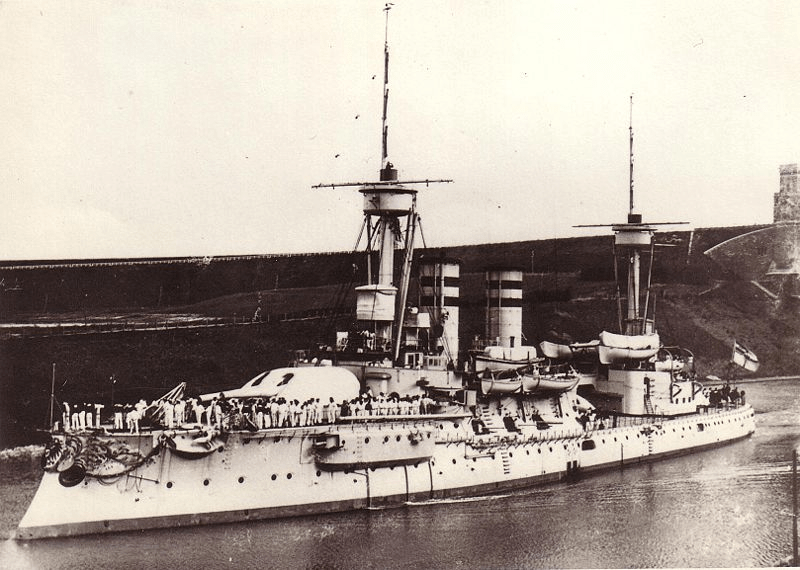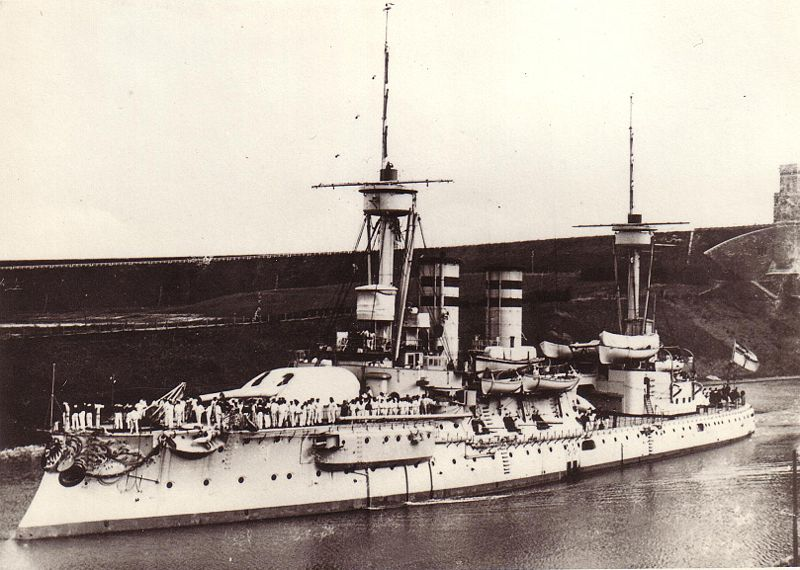German Pre-Dreadnought Battleship SMS Wörth
The SMS Wörth was one of four ships in the Brandenburg-class of pre-dreadnought battleships built for the Imperial German Navy in the late 19th century. Commissioned in 1893, Wörth served as a symbol of Germany’s emergence as a modern naval power and played a key role in the formative years of the Hochseeflotte (High Seas Fleet). Though eventually rendered obsolete by rapid technological advancements, she was part of a class that marked Germany’s transition from a coastal defense force to a blue-water navy capable of international operations.
Named after the 1870 Battle of Wörth during the Franco-Prussian War, SMS Wörth was laid down at the Germaniawerft shipyard in Kiel in 1890, launched in August 1892, and commissioned in October 1893. Like her sister ships (Brandenburg, Kurfürst Friedrich Wilhelm, and Weissenburg), Wörth was considered innovative at the time of her construction. She displaced around 10,000 tons at full load, measured about 115 meters in length, and was powered by vertical triple-expansion steam engines that gave her a top speed of roughly 16.5 knots.
Her main battery consisted of six 28 cm (11-inch) guns mounted in three twin turrets — one forward, one aft, and one amidships. This unusual triple turret arrangement gave the ship a heavier broadside than many of her contemporaries, although it also complicated her internal layout and created challenges with stability and armor distribution. Secondary armament included eight 10.5 cm guns along with a number of smaller-caliber quick-firing weapons and several torpedo tubes. Protection came in the form of a thick armor belt (up to 400 mm) over her central citadel and strong turret and deck armor, giving her substantial resilience against the weapons of her time.
Following her commissioning, Wörth joined the I Squadron of the German fleet and participated in training exercises, fleet manoeuvres, and ceremonial duties throughout the 1890s and early 1900s. Alongside her sister ships, she represented the core of the German battle fleet during this period, long before the dreadnought era reshaped naval power dynamics. In 1900, Wörth took part in Germany’s naval expedition to East Asia in response to the Boxer Rebellion in China. She formed part of the international force deployed to protect Western interests and suppress the anti-foreign uprising. Although her presence was largely symbolic, it marked one of Germany’s first demonstrations of naval power far beyond European waters.
After returning from China, Wörth resumed training duties in German waters, but her frontline role began to diminish with the introduction of newer, more capable battleships such as the Kaiser Friedrich III-class and Deutschland-class. She underwent limited modernization, including improvements to her fire control systems and secondary weaponry, but by 1910 she had been relegated to reserve status. The launch of HMS Dreadnought in 1906 had quickly rendered all pre-dreadnought battleships like Wörth outdated in comparison to newer all-big-gun capital ships.
At the outbreak of World War I in 1914, SMS Wörth was briefly reactivated and assigned to coastal defence duties, helping to secure Germany’s North Sea approaches. She later saw limited service in the Baltic Sea but, like most pre-dreadnoughts of her age, was quickly deemed unfit for modern naval combat. She spent the remainder of the war as a stationary training and accommodation ship, contributing in a secondary role while newer vessels took on combat duties.
Following the end of the war, Wörth was formally decommissioned and struck from the naval register in early 1919. She was sold for scrap and dismantled at Audorf-Rendsburg in 1921.



